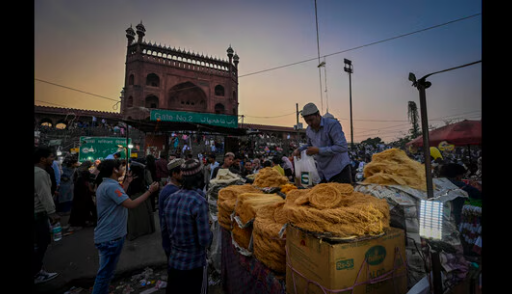Pushpesh Pant's Culinary Journey: From Royal Feasts to Delhi's Street Food
New Delhi Buzz
Archives
Pushpesh Pant's Culinary Journey: From Royal Feasts to Delhi's Street Food
SIGN UP FOR OUR NEWSLETTER
Pushpesh Pant's Culinary Journey: From Royal Feasts to Delhi's Street Food |
Exploring the Evolution of Delhi's Gastronomic Landscape Through Pant's Latest Work |
Renowned food historian Pushpesh Pant has long been a captivating voice in the realm of culinary arts. Whether sharing anecdotes on radio or under the shade of a tree in Sunder Nursery, his narratives intertwine memory and taste, making the act of recalling flavors as vivid as experiencing them. His latest book, From the King's Table to Street Food: A Food History of Delhi, delves deep into the city's rich gastronomic tapestry.
In this work, Pant doesn't aim to present a definitive thesis. Instead, he immerses readers in the voids and absences that have shaped Delhi's culinary identity. The aroma of a vanished kebab stall, the lingering sweetness of a jalebi no longer available, or the nostalgic exclamation, "Yeh asli nihari hai," now seldom heard, all paint a picture of a city in constant flux. This approach transforms history from a mere chronological account to a collection of residues and memories.
Pant's narrative resists the academic urge to dissect food into mere subjects of study. He portrays it as an unreliable narrator—part witness, part storyteller. Traversing through Mughal durbars, post-Partition refugee kitchens, and 1980s government guest house buffets, his tone remains inquisitive yet non-conclusive. This method underscores the book's central question: "Who’s to say what is authentic anymore?" By refusing to solidify meanings, Pant's writing defies conventional non-fiction standards, offering traces and longings instead of concrete facts.
The book doesn't seek to correct historical narratives but rather sidesteps them, focusing on the forgotten halwai, the refugee daughter-in-law who crafted a new biryani from limited resources, and the rumor that a particular nihari joint once served the emperor's cook. These unverifiable yet valid stories highlight the political undertones of Pant's stance. He illustrates a city reshaped by displacement, war, plague, economic migration, and caste dynamics, emphasizing that many of Delhi's so-called food traditions are relatively recent, challenging the notion of a static culinary identity.
Pant's exploration extends to the evolution of sweets, such as Ghantewala’s sohan halwa, which becomes a metaphor for legacy and memory. He acknowledges the unreliability of memory, suggesting that food serves as a device to recall the past, even if those recollections are imperfect. This perspective liberates him from the need to be historically accurate, focusing instead on the emotional and cultural significance of culinary traditions.
The book also examines the fluidity of Delhi's foodscape, influenced by various migrations and cultural amalgamations. Pant notes that the flavors of Delhi aren't originally from the city but are borrowed from regions like Rampur, Lucknow, Awadh, Meerut, Punjab, Bengal, and Bihar. This diversity underscores the city's ever-evolving culinary identity. He highlights how Mughlai cuisine was adapted by post-Partition Punjabi refugees, transforming slow, ceremonial dishes into fast, fiery, and practical meals. This adaptation reflects culinary history as lived resistance in the kitchen.
Pant's prose mirrors this ethos, blending phrases from old Urdu poets, colonial gazetteers, and street vendors, creating a rich tapestry of language and culture. While the book's digressions may seem overwhelming at times, they serve to ferment ideas, much like food left to develop its flavors over time. However, the absence of direct engagement with issues of power, caste, and class may leave some readers yearning for a deeper analysis.
Ultimately, Pant's unique position as both an insider and outsider—an academic who distrusts academia, a Delhi resident who arrived as a student from the hills—allows him to offer a fresh perspective on the city's culinary history. His work is not about preserving Delhi’s culinary past but about showcasing how the past lives on through distortion, mishearing, and new combinations. By the end, readers may not have a comprehensive knowledge of Delhi's food history, but they will have experienced how it might have felt to eat through it, understanding that history, too, can be savored, with its aftertaste often more vivid than the events themselves. |

